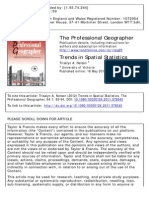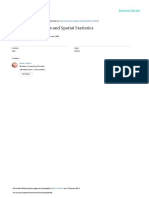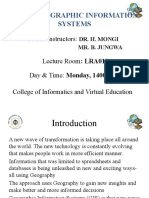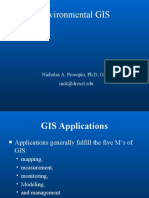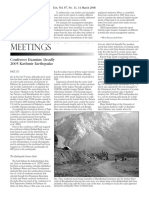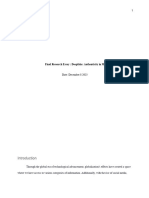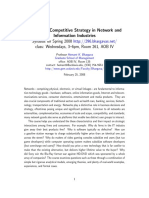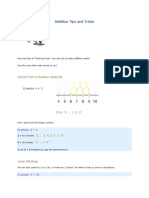0% found this document useful (0 votes)
413 views1 pageGeospatial Analysis 6th Edition, : and Terminology
This document is an introduction to the 6th edition of the guide "Geospatial Analysis" from 2018. It discusses spatial analysis techniques available in geographic information systems and related software. The term GIS was coined in 1963 by Roger Tomlinson to describe building a digital natural resource inventory system for Canada. The success of GIS has been driven by its applications in solving real-world problems. The guide covers a wide range of topics divided into main sections and chapters to identify distinct topics.
Uploaded by
Yaseen MuhammadCopyright
© © All Rights Reserved
We take content rights seriously. If you suspect this is your content, claim it here.
Available Formats
Download as PDF, TXT or read online on Scribd
0% found this document useful (0 votes)
413 views1 pageGeospatial Analysis 6th Edition, : and Terminology
This document is an introduction to the 6th edition of the guide "Geospatial Analysis" from 2018. It discusses spatial analysis techniques available in geographic information systems and related software. The term GIS was coined in 1963 by Roger Tomlinson to describe building a digital natural resource inventory system for Canada. The success of GIS has been driven by its applications in solving real-world problems. The guide covers a wide range of topics divided into main sections and chapters to identify distinct topics.
Uploaded by
Yaseen MuhammadCopyright
© © All Rights Reserved
We take content rights seriously. If you suspect this is your content, claim it here.
Available Formats
Download as PDF, TXT or read online on Scribd
/ 1














